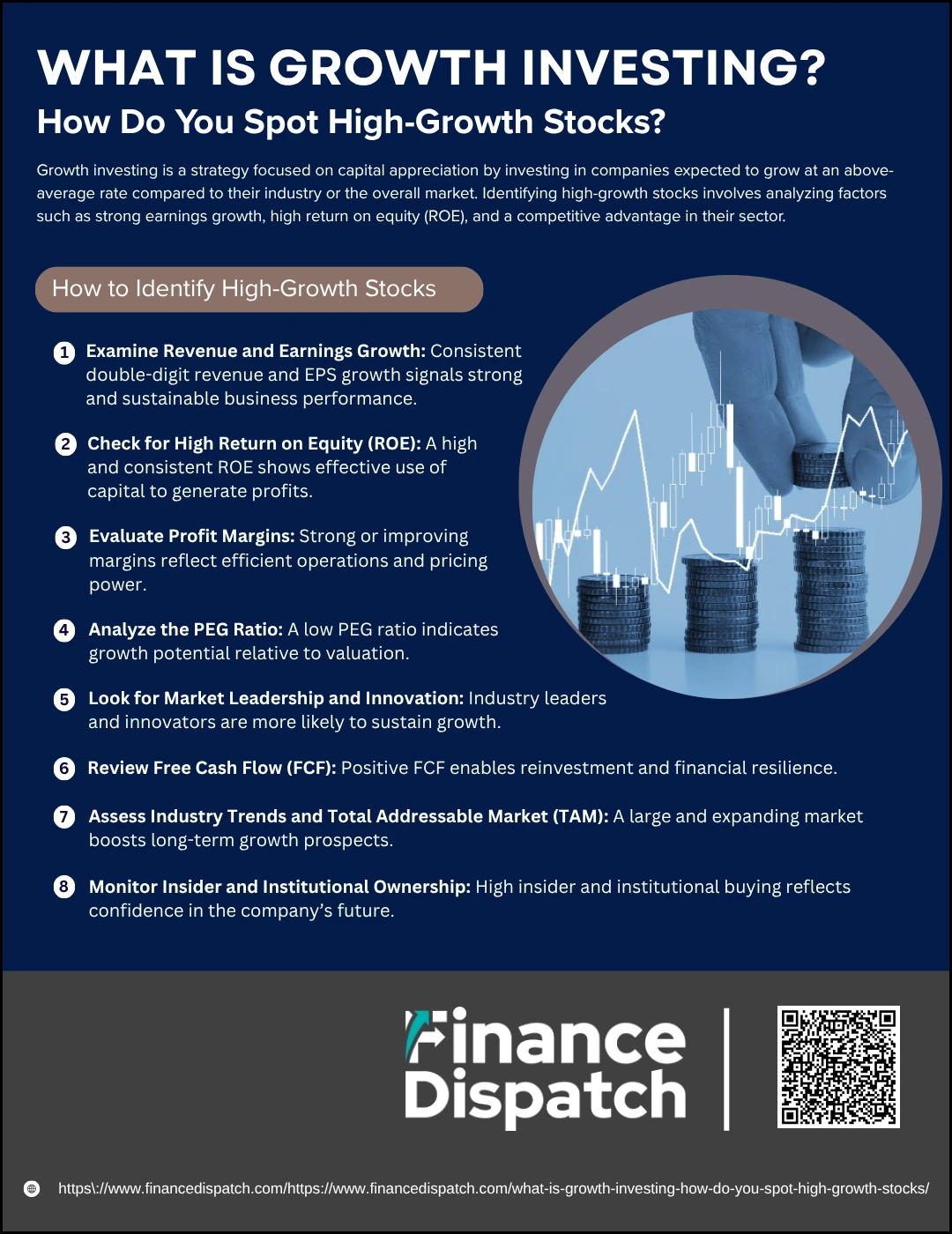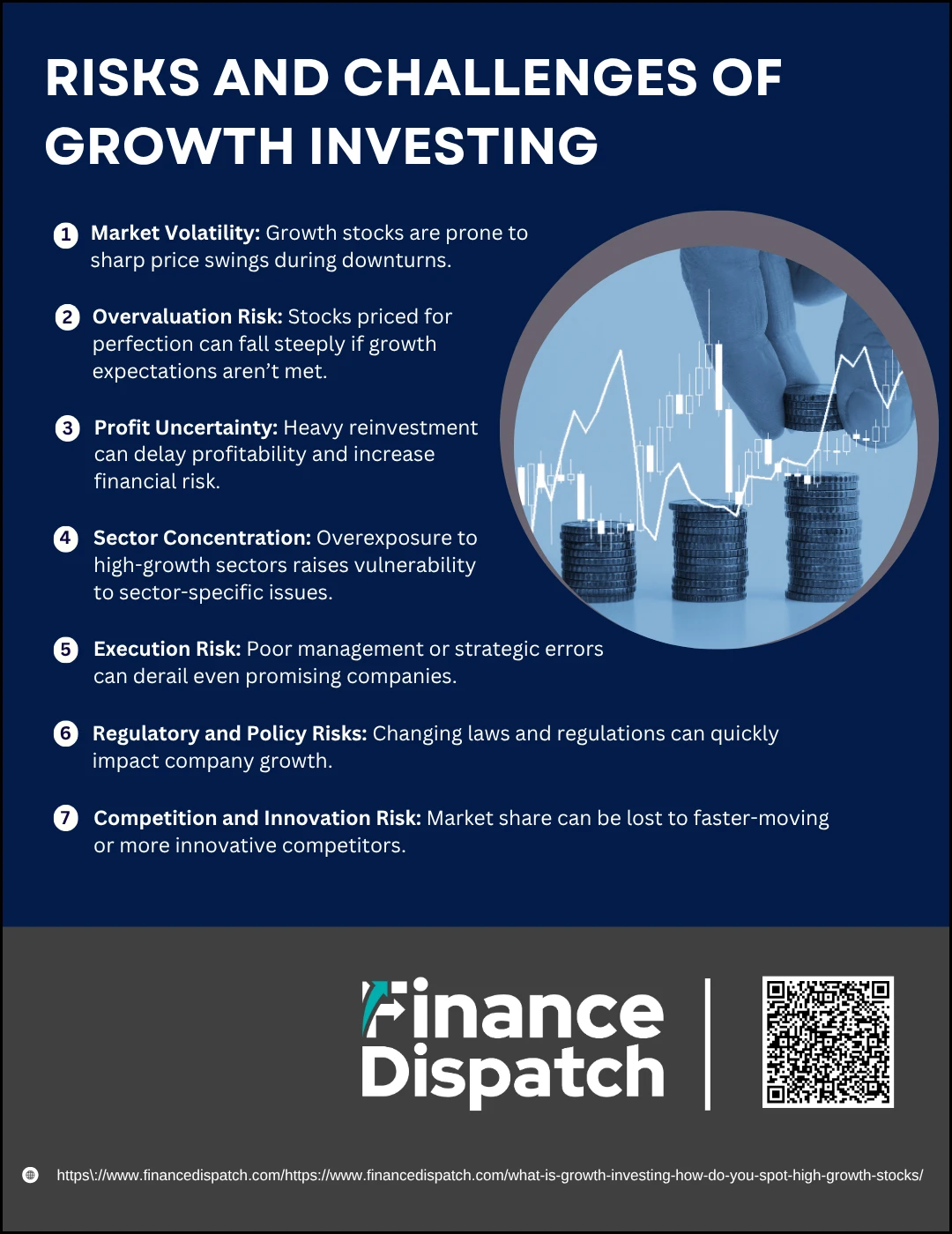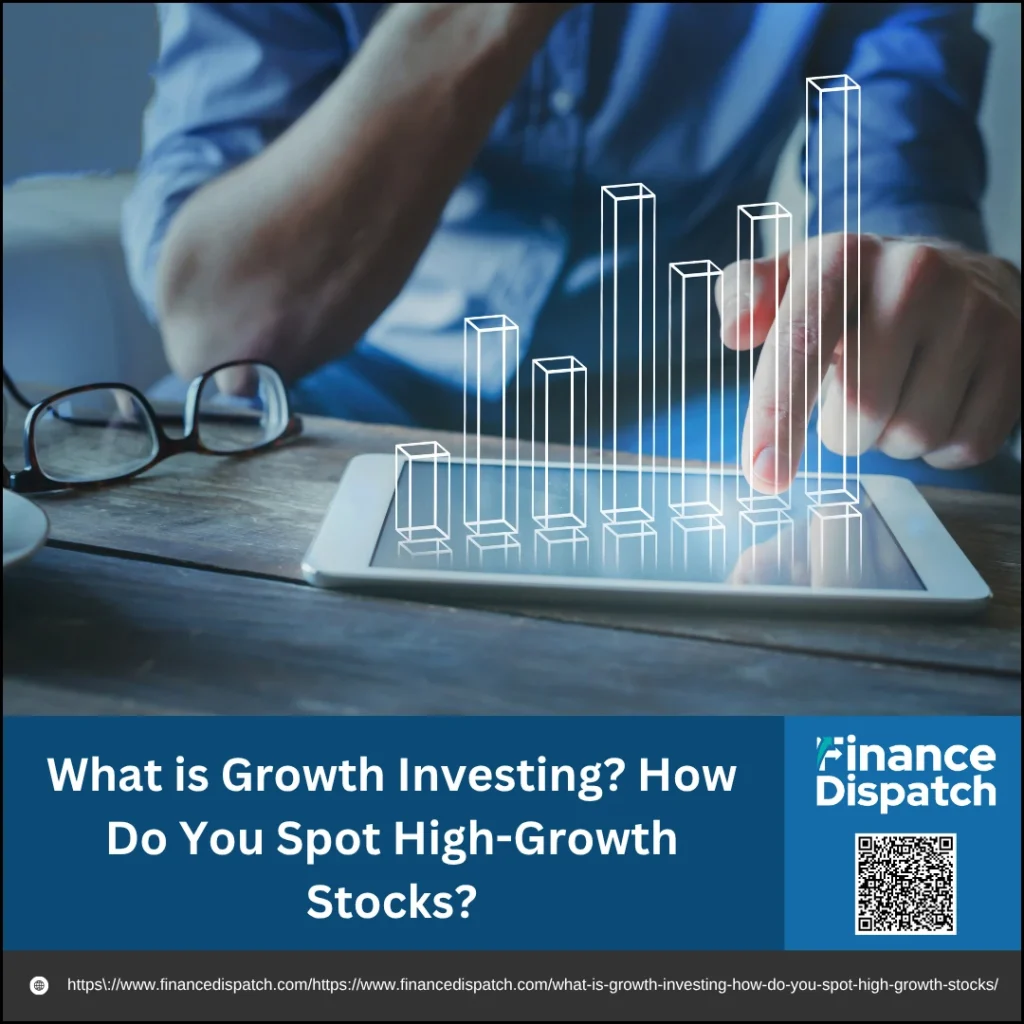If you’re looking to grow your wealth over time by investing in companies with big future potential, growth investing might be the strategy for you. This approach focuses on finding businesses expected to expand faster than the broader market—often through innovation, market disruption, or rapid revenue growth. While it carries more risk than other strategies, it also offers the chance for substantial long-term rewards.
What is Growth Investing?
Growth investing is an investment strategy that focuses on buying shares of companies that are expected to grow significantly faster than the market average. These companies often operate in dynamic, innovative sectors like technology or healthcare and typically reinvest their profits into expanding their operations, rather than paying out dividends. The main goal of growth investing is capital appreciation—earning a profit by selling the stock at a much higher price in the future. This strategy appeals to investors who are willing to take on higher risk in exchange for the possibility of substantial long-term returns.
Why Investors Choose Growth Investing
Investors are drawn to growth investing because of its potential to deliver substantial long-term returns. By targeting companies that are expanding rapidly, they aim to benefit from significant stock price appreciation as these businesses increase their revenues, market share, and earnings. Unlike value investing, which focuses on undervalued stocks, growth investing emphasizes future potential over current valuation. This forward-looking approach allows investors to participate in groundbreaking innovations and industry transformations. While it involves higher risk and volatility, the promise of strong capital gains makes growth investing an appealing choice for those with a long-term outlook and higher risk tolerance.
Core Metrics and Qualities of High-Growth Stocks
Identifying high-growth stocks involves analyzing a combination of financial metrics and qualitative traits that signal strong future potential. Growth investors seek companies with solid earnings performance, efficient use of capital, and a competitive edge in their industry. These metrics help evaluate whether a company is capable of sustaining rapid expansion and delivering long-term value.
Here’s a table highlighting the core metrics and what they reveal about a company’s growth potential:
| Metric | What It Indicates | Why It Matters |
| Earnings Per Share (EPS) | Measures profit allocated to each share | Consistent EPS growth shows improving profitability |
| Revenue Growth | Year-over-year increase in sales | Indicates rising demand and market expansion |
| Return on Equity (ROE) | Net income divided by shareholder equity | Reflects how effectively a company uses investor capital |
| Profit Margins | Earnings as a percentage of sales | Strong margins suggest efficient cost management and pricing power |
| PEG Ratio | P/E ratio divided by EPS growth rate | Assesses valuation relative to growth; <1 may indicate undervaluation |
| Price-to-Sales (P/S) Ratio | Market cap divided by revenue | Useful for evaluating early-stage growth companies |
| Free Cash Flow (FCF) | Cash remaining after capital expenditures | Enables reinvestment without excessive debt |
| Total Addressable Market | The overall market demand for a product or service | A large TAM suggests ample room for growth |
| Competitive Moat | Unique advantage like brand, tech, or IP | Helps sustain long-term growth and fend off competitors |
 How to Identify High-Growth Stocks
How to Identify High-Growth Stocks
Identifying high-growth stocks requires a strategic blend of quantitative analysis and industry insight. Investors look for companies that not only show strong financial performance but also operate in markets with expanding demand and innovation. By examining specific financial indicators and business characteristics, you can better gauge whether a stock has the potential to deliver sustained growth over time.
Here are key steps to identify high-growth stocks:
1. Examine Revenue and Earnings Growth
Look for companies with consistent double-digit revenue and earnings per share (EPS) growth over several years. Strong revenue growth indicates increasing demand for the company’s products or services, while EPS growth reflects improving profitability. A track record of growth shows that the company is not just experiencing a temporary uptick, but is on a sustained upward path.
2. Check for High Return on Equity (ROE)
ROE measures how efficiently a company uses shareholders’ capital to generate profit. A high ROE, especially one that consistently outperforms industry peers, suggests that management is effectively allocating resources and driving profitability. Growth companies often have an ROE above 15%, which can signal strong underlying financial health.
3. Evaluate Profit Margins
Profit margins—especially pretax and operating margins—show how much a company keeps from its sales after costs. High or improving margins indicate effective cost management and the ability to maintain pricing power. This becomes even more important in competitive industries where tight control of expenses can be a key growth driver.
4. Analyze the PEG Ratio
The PEG ratio accounts for a company’s P/E ratio in relation to its earnings growth rate. It helps investors understand if a stock’s high valuation is justified by its future growth potential. A PEG ratio under 1 may indicate a stock is undervalued given its growth prospects, whereas a ratio over 2 could signal an overvalued stock.
5. Look for Market Leadership and Innovation
High-growth companies often lead their industries or create entirely new ones. These companies tend to offer breakthrough products or services, hold patents, or have business models that challenge traditional norms. Strong innovation often creates a competitive edge and attracts both consumers and investors.
6. Review Free Cash Flow (FCF)
Free cash flow is the cash left after a company covers its operating expenses and capital expenditures. Positive FCF is crucial because it enables a company to fund research, marketing, expansion, and acquisitions without borrowing. Sustained FCF also makes a company more resilient during downturns.
7. Assess Industry Trends and Total Addressable Market (TAM)
A company’s growth potential is tied to the overall demand in its industry. Sectors like technology, healthcare, and renewable energy often have large and growing TAMs. If a company is positioned to capture a significant portion of a growing market, its chances for rapid growth increase dramatically.
8. Monitor Insider and Institutional Ownership
When company executives and institutional investors hold or are buying significant shares, it usually reflects strong confidence in the company’s future. Insider buying, in particular, is a positive signal that those closest to the company believe in its long-term success and value.
Strategic Tips for Building a High-Growth Portfolio
Building a high-growth portfolio requires more than just picking a few fast-moving stocks. It involves a disciplined strategy that balances risk with reward, focuses on long-term potential, and adapts to changing market conditions. Growth investors must be selective, patient, and data-driven to identify opportunities that can compound returns over time. Below are strategic tips to help guide your approach.
1. Focus on Innovation-Driven Sectors: Allocate capital to industries like technology, healthcare, renewable energy, and biotech—sectors known for rapid evolution and market disruption.
2. Use Stock Screeners to Filter Opportunities: Leverage stock screeners to identify companies with strong earnings growth, high ROE, and expanding revenue. This helps narrow your search and maintain consistency in your selection process.
3. Look for Sustainable Competitive Advantages: Prioritize businesses with economic moats—such as proprietary technology, brand loyalty, or high switching costs—that help them maintain market leadership.
4. Implement Dollar-Cost Averaging (DCA): Reduce the risk of buying at market highs by investing a fixed amount at regular intervals. This smooths out price volatility and builds positions gradually.
5. Diversify Across Multiple Growth Stocks: Spread investments across different sectors and companies to minimize risk. Not every growth stock will perform as expected, so diversification helps buffer underperformance.
6. Monitor Market Trends and Adjust Accordingly: Stay informed about emerging trends like artificial intelligence or clean energy. These shifts often create new high-growth opportunities worth adding to your portfolio.
7. Set Realistic Time Horizons: Growth investing rewards patience. Set long-term goals and avoid panic selling during short-term market volatility.
8. Review and Rebalance Periodically: Evaluate your portfolio regularly to ensure your holdings still meet your growth criteria. Rebalancing helps lock in gains and reduce exposure to weakening positions.
Growth vs. Value vs. Dividend Investing
When building an investment strategy, it’s important to understand the differences between growth, value, and dividend investing. Each approach has its own goals, risk profile, and methods for generating returns. Growth investing focuses on companies with high future potential, value investing targets undervalued companies trading below their intrinsic worth, and dividend investing seeks out companies that return profits to shareholders regularly. Choosing the right strategy—or blending them—depends on your financial goals, risk tolerance, and time horizon.
Here’s a table comparing the three strategies:
| Feature | Growth Investing | Value Investing | Dividend Investing |
| Primary Goal | Capital appreciation | Buying undervalued stocks for future price correction | Earning regular income through dividends |
| Stock Characteristics | High P/E ratios, rapid earnings/revenue growth | Low P/E or P/B ratios, trading below intrinsic value | Steady earnings, consistent dividend payouts |
| Typical Sectors | Technology, healthcare, biotech | Financials, industrials, consumer staples | Utilities, telecom, large consumer goods |
| Profit Distribution | Reinvest profits to fuel growth | May or may not pay dividends | Regular dividend payments to shareholders |
| Risk Level | Higher – due to volatility and future uncertainty | Moderate – tied to market cycles and fundamentals | Lower – considered more stable and predictable |
| Time Horizon | Long-term | Medium to long-term | Often long-term, suitable for income-focused investors |
| Ideal for Investors Who | Want to maximize long-term gains and can handle volatility | Seek bargains and are patient for value realization | Prefer stable income and less price fluctuation |
 Risks and Challenges of Growth Investing
Risks and Challenges of Growth Investing
Growth investing offers the potential for significant returns, but it also comes with its own set of risks and challenges that investors must carefully consider. Since this strategy often involves companies with unproven track records or aggressive expansion plans, it’s essential to understand the downside risks before committing capital. Recognizing these challenges can help you build a more balanced portfolio and avoid costly mistakes.
Here are key risks and challenges associated with growth investing:
1. Market Volatility
Growth stocks are typically more volatile than value or income stocks. Because these companies are priced based on expected future earnings, even minor disappointments in performance can trigger significant price drops. This volatility can be emotionally challenging for investors, especially during market corrections or economic downturns, leading to impulsive decisions and potential losses.
2. Overvaluation Risk
Many growth stocks are priced for perfection. Investors may pay a high premium based on the expectation of strong future growth. If the company falls short of these expectations—even slightly—the stock price can plummet. Overvaluation also reduces the margin of safety, increasing the risk of poor returns if market sentiment shifts.
3. Profit Uncertainty
Growth companies often reinvest their profits into research, development, or expansion rather than focusing on immediate profitability. While this can drive future returns, it also means that the business may operate at a loss for extended periods. If revenue growth doesn’t translate into profit within a reasonable time frame, the company could run into financial trouble, impacting investor returns.
4. Sector Concentration
Growth investing tends to focus heavily on sectors known for rapid innovation, such as technology, biotech, and renewable energy. While these sectors can generate high returns, they’re also more exposed to sector-specific risks like regulatory crackdowns, supply chain issues, or changes in consumer behavior. Without proper diversification, your entire portfolio could suffer.
5. Execution Risk
A company may have a great product or a large market opportunity, but poor execution can derail its potential. This includes issues like management inexperience, poor strategic decisions, operational inefficiencies, or failed product launches. Even with strong fundamentals, execution errors can stall or reverse a company’s growth trajectory.
6. Regulatory and Policy Risks
Fast-growing industries often come under regulatory scrutiny. For instance, tech companies may face antitrust investigations, data privacy laws, or platform regulations. In healthcare, changes to government reimbursement policies or drug approval processes can heavily impact revenue. These unpredictable changes can undermine a company’s growth prospects overnight.
7. Competition and Innovation Risk
High-growth markets attract intense competition. New or existing players may introduce superior products or services that capture market share. If a growth company fails to keep up with innovation or shifts in consumer preferences, it could lose its competitive edge and see its growth stall.
Notable Growth Investing Examples and Gurus
Growth investing has produced some of the most successful investors and iconic companies in stock market history. These investors recognized the power of future potential over present valuation and focused on businesses poised for rapid expansion. By identifying innovation, scalability, and strong leadership early on, they set themselves apart and inspired generations of growth-focused investors. Below are notable examples and individuals who have left a lasting impact on the growth investing world.
1. Thomas Rowe Price, Jr.
Known as the “father of growth investing,” he founded the T. Rowe Price Growth Stock Fund in 1950. He emphasized long-term thinking and investing in companies with strong earnings prospects, compounding returns steadily over decades.
2. Philip Fisher
Author of Common Stocks and Uncommon Profits, Fisher introduced the idea of investing in quality companies through thorough research and networking. His approach emphasized innovation, management quality, and long-term growth.
3. Peter Lynch
Legendary manager of the Magellan Fund at Fidelity, Lynch popularized the “growth at a reasonable price” (GARP) strategy—a hybrid of growth and value investing. His practical philosophy of “invest in what you know” made growth investing accessible to individual investors.
4. Amazon Inc. (AMZN)
A textbook example of a growth stock, Amazon reinvested aggressively in its infrastructure and innovation. Despite years of minimal profit, the company’s relentless focus on long-term growth transformed it into a global tech giant.
5. Tesla Inc. (TSLA)
Tesla exemplifies high-growth potential driven by innovation. From electric vehicles to energy solutions, Tesla’s disruptive technology and bold vision have made it a favorite among growth investors despite volatility.
6. Apple Inc. (AAPL)
Apple’s shift from hardware sales to services and ecosystem-based growth demonstrates how a company can continuously reinvent itself. Its consistent innovation and strong brand loyalty make it a long-standing growth story.
Conclusion
In conclusion, growth investing is a powerful strategy for those seeking to build wealth by identifying companies with strong potential for future expansion. While it involves higher risk and market volatility, the rewards can be substantial when investors choose wisely and stay focused on long-term gains. By understanding key metrics, applying disciplined strategies, and learning from successful growth investors, you can position your portfolio for meaningful capital appreciation. Whether you’re just starting or refining your investment approach, growth investing offers a dynamic path toward financial growth and innovation-driven success.



